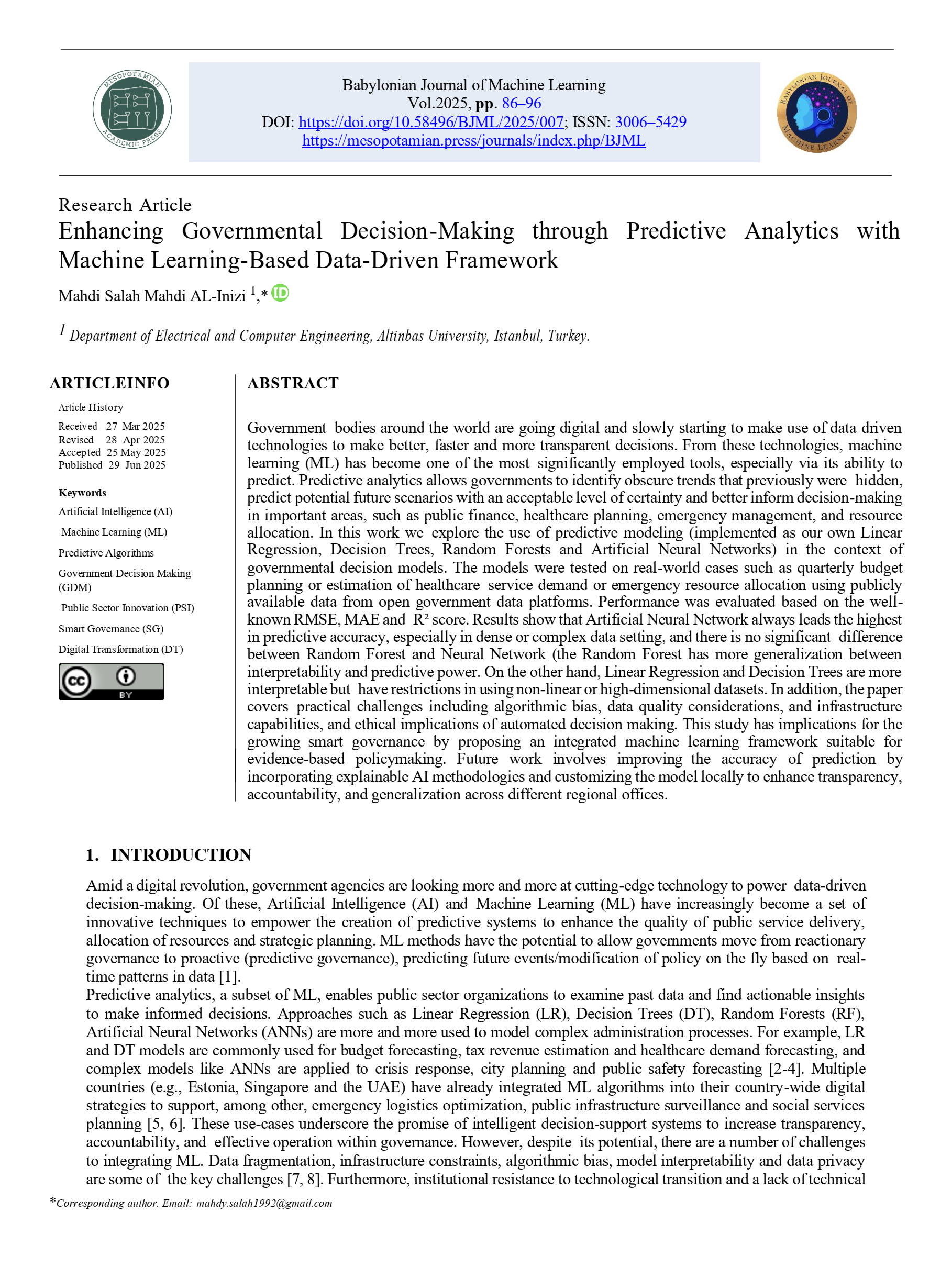Enhancing Governmental Decision-Making through Predictive Analytics with Machine Learning-Based Data-Driven Framework
Main Article Content
Abstract
Government bodies around the world are going digital and slowly starting to make use of data driven technologies to make better, faster and more transparent decisions. From these technologies, machine learning (ML) has become one of the most significantly employed tools, especially via its ability to predict. Predictive analytics allows governments to identify obscure trends that previously were hidden, predict potential future scenarios with an acceptable level of certainty and better inform decision-making in important areas, such as public finance, healthcare planning, emergency management, and resource allocation. In this work we explore the use of predictive modeling (implemented as our own Linear Regression, Decision Trees, Random Forests and Artificial Neural Networks) in the context of governmental decision models. The models were tested on real-world cases such as quarterly budget planning or estimation of healthcare service demand or emergency resource allocation using publicly available data from open government data platforms. Performance was evaluated based on the well-known RMSE, MAE and R² score. Results show that Artificial Neural Network always leads the highest in predictive accuracy, especially in dense or complex data setting, and there is no significant difference between Random Forest and Neural Network (the Random Forest has more generalization between interpretability and predictive power. On the other hand, Linear Regression and Decision Trees are more interpretable but have restrictions in using non-linear or high-dimensional datasets. In addition, the paper covers practical challenges including algorithmic bias, data quality considerations, and infrastructure capabilities, and ethical implications of automated decision making. This study has implications for the growing smart governance by proposing an integrated machine learning framework suitable for evidence-based policymaking. Future work involves improving the accuracy of prediction by incorporating explainable AI methodologies and customizing the model locally to enhance transparency, accountability, and generalization across different regional offices.
Article Details
Issue
Section

This work is licensed under a Creative Commons Attribution 4.0 International License.
Deprecated: json_decode(): Passing null to parameter #1 ($json) of type string is deprecated in /home/u273879158/domains/mesopotamian.press/public_html/journals/plugins/generic/citations/CitationsPlugin.php on line 68
